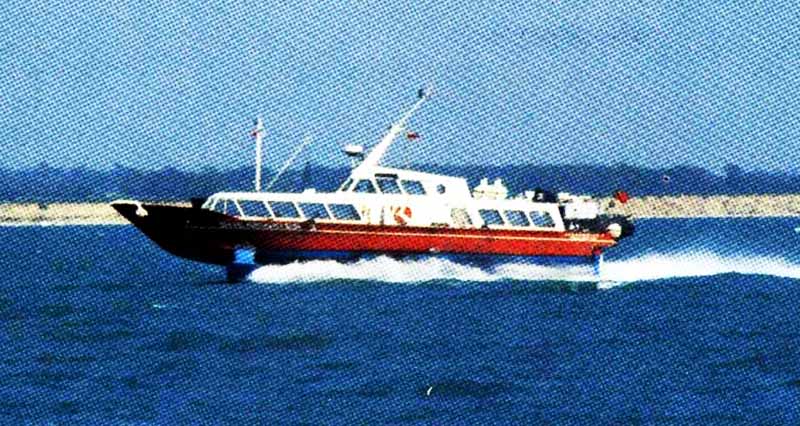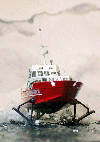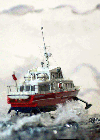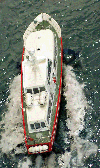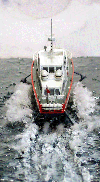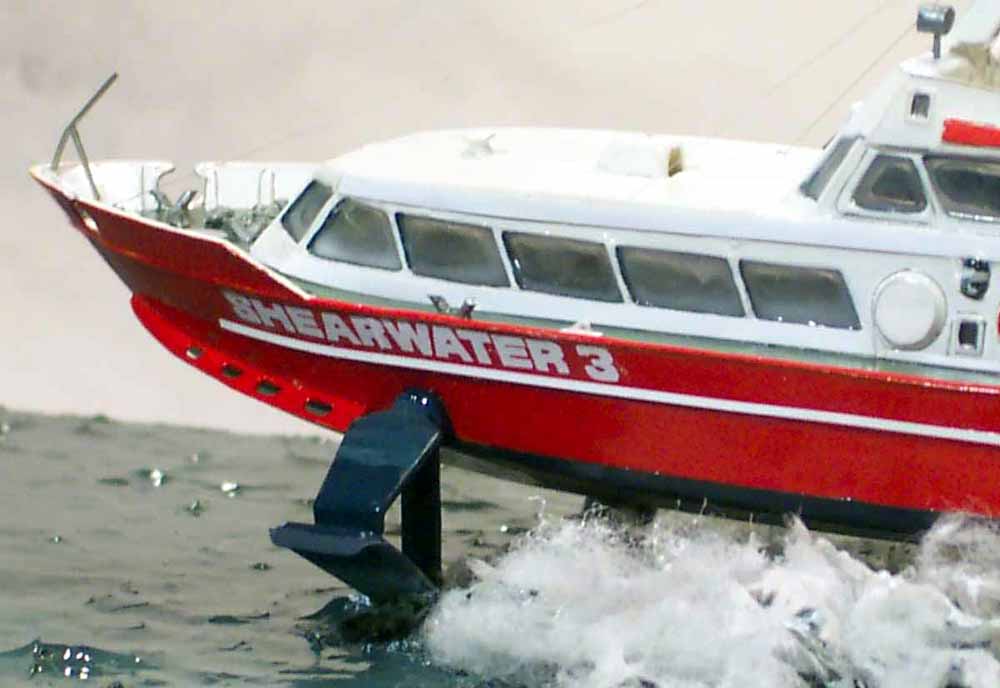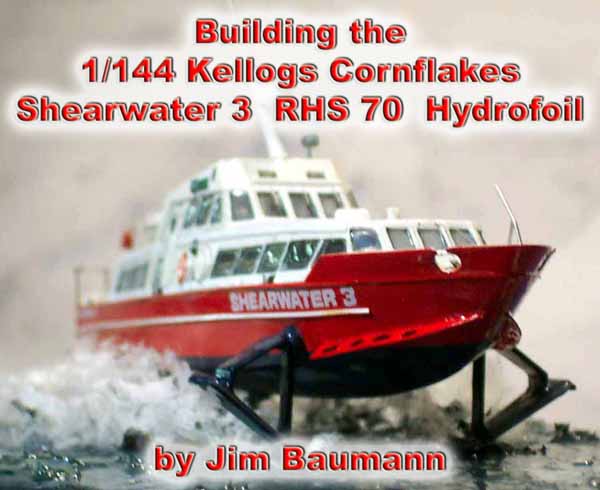 |
||||||||||||||||||||||
Living near Southampton I have traveled on the 'foils back and forth to Cowes to go sailboat racing and admired their spectacular stance whilst afloat, heard their engines throb late on quiet nights, sworn and gesticulated at them when they roared past within 20 feet----- shaking the little breeze I had out of my sails while becalmed .... yet I was very sad to see the last one leave the Solent... the catamarans whilst magnificent have not that vital factor that inspires passion to mechanical things.... HYDROFOIL!.... the very term is exciting and exotic. The idea of making
a conventional watercraft travel faster by reducing its wetted area is
not new...
The heyday of the civilian hydrofoil lasted from the late 1950's through to the early 1990's, when the new generation of high speed water jet propelled catamaran and wave piercer started to displace both Hovercraft and Hydrofoils from hitherto unchallenged short haul high speed ferry routes. The catamarans have a far greater payload, higher sea state operating window for a pro-rata equivalent operating cost. The Shearwater model that I am presenting here was a part of the fleet of Hydrofoils operated by Red Funnel Ferries of Southampton UK from 1968 onwards, on the busy Southampton to Cowes route, a trip of around 12 nautical miles taking around twenty minutes, which was achieved on a regular half hourly schedule throughout the year. Red Funnel placed the order for the Rodriguez RHS 70 in 1971 to be named Shearwater 3, she was followed by Shearwater 4,5 and 6. they performed a sterling service running in latter years at a mere 20 minute intervals.... Shearwater 3 was sold in the mid 1990's to Greece where she is still in commission, with Shearwater 5 and 6 continuing the service until being displaced finally by the RED JET ferries in 2000. |
||||||||||||||||||||||
| BUILDING THE MODEL | ||||||||||||||||||||||
| Basis of this model was the 1/144 scale push fit injection molded plastic
kit issued with Kellogg's Corn flakes in the mid 1970's, in return for
5 box lids and a few old pennies you were sent this exciting kit in a very
somber brown box,; presentation has come a long way!
The kit is very basic, simplified and a bit chunky around the edges, yet it is evidently based on accurate source material, having measured the real thing it scaled out almost perfectly! |
 |
|||||||||||||||||||||
| A brief drypush-together showed where improvements could
be made.
The window frames were far to thick and would have to be replaced with
thin styrene strip.
cut away and in-filled using Evergreen strip and filed away at the bridge windows. |
 |
|||||||||||||||||||||
 |
||||||||||||||||||||||
 |
||||||||||||||||||||||
| The fwd triangular windows were openers, so I made round corners and
thickened the lower edge
The window glazing was carried out using thinned white glue. The Hull was very fair and smooth, alas photos showed there to be a coaming strip as well as a sprayrail fwd. These were fabricated from two different sizes of brass wire and added. |
 |
|||||||||||||||||||||
| One of the major features were the Fiberglass life raft
canisters , these were scratchbuilt using styrene tube and the spherical
ends of dressmaking pins.
The characteristic ridges were made of styrene strip wrapped around tube, taped and dipped into boiling water for a moment. When cool, the spiral was cut in half along its length and added to the base assembly , this was finished off with Black vinyl tape. The photos describe the process clearly.
|
||||||||||||||||||||||
| Another distinct feature were the large aerated spray deflectors at the bow; PE would have been perfect but....I made a paper pattern for the complex double curvature of the hull, clamped two pieces of styrene together, drilled and filed out the apertures. |  |
|||||||||||||||||||||
| I added the angled bollards of scrap styrene rod, the lifting eyes
from adapted scrap PE, the stainless steel handrails were soldered up of
steel piano wire, added vents and hatches etc.
The mast was an interesting project in itself; made of a hollow curved section of paper infused with CA glue, backed with a piece of appropriate ex GMM IJN crane jib Photoetch.. |
 |
|||||||||||||||||||||
| The radar, searchlight, aerials, spreaders and navlamps
were fabricated and added .
I thinned down the foils and legs and added the shaft and prop to show the model assembled out of the water.
|
||||||||||||||||||||||
Subsequently the foils and shaft were cut off with side
cutters at the proposed foil borne waterline, mounted on a sea made of
acrylic paste, thrown up spray being created by torn tissue paper infused
with CA to give a transluscent appearance and then lightly drybrushed,
spray mist being added with cotton wool.
The original yellowed name decals were too large in any case; these were re-designed and printed for me with great patience and kindness by David Carter of WEM, thank you. |
||||||||||||||||||||||
For a full history of Red funnel Hydrofoils this link will reward with great photo coverage! More Hydrofoil photos and figures can be found on International Hydrofoil society page.
|
||||||||||||||||||||||
| More of Jim Baumann's work. | ||||||||||||||||||||||
